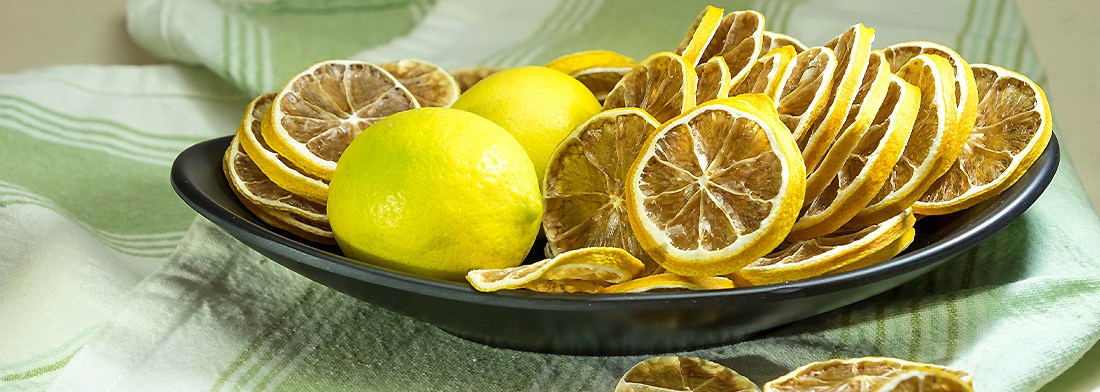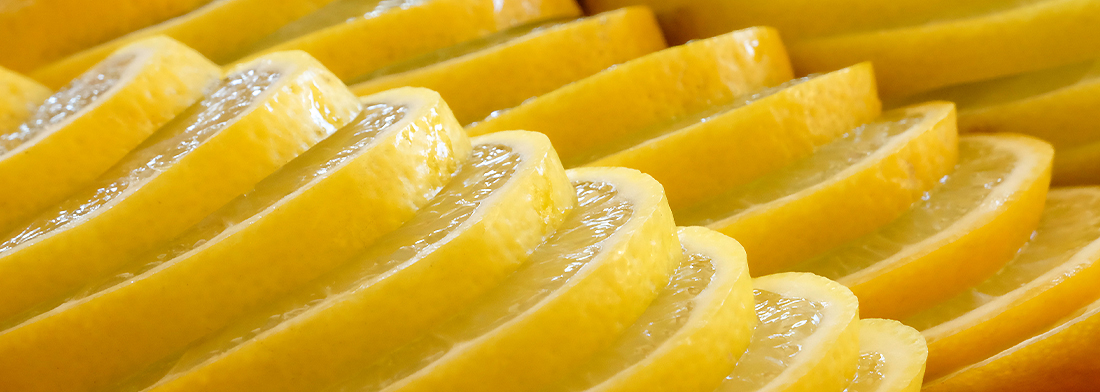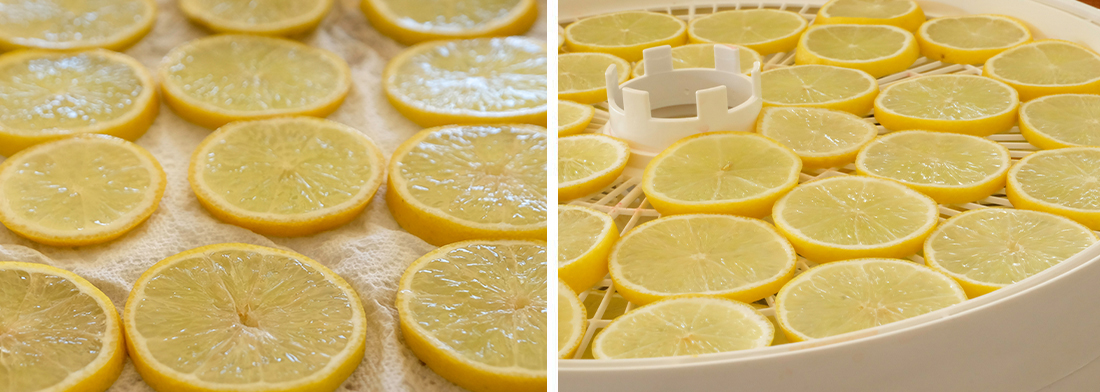Dried Lime
- Drying, Salting & Potting

Drying limes and other fruit and vegetables is one of the easiest ways to preserve your abundant harvest. Using a dehydrator, within a few hours, winter harvest limes will be transformed into an intensely flavoured and tangy cache for use throughout the year. Its fragrance, from the concentrated oils in the skin, will tease your senses.
Turn summer spritzers and other aperitifs into works of art with slices of dried limes, garnished with fresh mint, dainty blue borage or bright yellow nasturtium flowers. Alternatively frost the rims of your next Whisky Sour or Margaretta glass with crushed salt and dried lime or use as a creative garnish on cheesecake, pavlova, citrus tart, lemon meringue pie or ice cream desserts.
This recipe will also work for lemons, mandarins, cumquats, oranges, blood oranges, tangelo’s and grapefruit. Let a dehydrator do all the work for you and watch it conveniently produce a consistently high-quality product.
- Preparation Time:
- 15 minutes
- Drying Time:
- 6-8 hours
PREPARATION
Wash limes to remove any commercial wax or garden debris and dry.

INGREDIENTS
- 10 Medium sized
- Ripe limes
METHOD
Wash the limes to remove any garden debris if home grown or any artificial wax that may have been used as part if commercial processing.
Leaving the peel on, slice the limes 3-5 mm thick.
Once cut, plat out on paper towel or a clean dry tea towel. Cover with the same and pat dry to remove any immediate excess moisture.
- Place the sliced lime rings, evenly in a single layer without overlapping, onto the dehydrator tray.
As each tray is loaded, place in the dehydrator, cover with the lid and commence drying. Repeat and multiple trays as required.
-
Cook at 58-60 degress C. or at the recommended specified by your dehydrator brand, for approximately 6-8 hours until the slices are dried and not sticky to touch. Turn over once, half way through the cooking time.
-
Allow to cool before storing in paper bags and/or an airtight container. They will go mouldy if they are stored in a plastic bag.
-
Label with the name of the product and date dried as a minimum and store in a cool, dry dark place.
NOTES
- Use only the best quality produce at the peak of ripeness and flavour. Remove any bruised or damaged sections but do not use mouldy fruit.
- No pre-treatment is required when drying citrus as they do not oxidise (go brown when cut and exposed to the air) as apples, pears and apricots.
- It is recommended that fruit is dried at 58-60 degrees C to minimise the loss of heat-sensitive vitamin A and C and to retain colour.
- Drying times can vary and will be influenced by the age, type and efficiency of your dehydrator, fruit moisture content, the thickness and evenness of the sliced fruit and climatic conditions such as temperature and humidity.
- Check the slices every hour or so and turn over as required. Remove any slices that are dried and rearrange the trays as required.
- Other items that can be recorded include dried weight, drying time and temperature, length of storage time before use - your own Best Before date - plus any other information you think is important. I have different varieties of apples, citrus and peaches so I like to note the fruit type such as Granny Smith or Pink Lady Dried Apples.
- Correct labelling assists in rotating products as the pantry starts to fill from your preserving adventures.
- Place the latest products to the back of your storage so that the oldest preserved products are always used first
- Package dried fruit as soon as it is cool so that it does not commence absorbing moisture. Exposure to moisture at this stage or from incorrect packaging can lead to a loss of quality and the development of mould during storage.
- Home vacuum packaging is an excellent way to keep your products dry and preserve their flavour and colour. Vacuum packaging will extend the shelf life 3 - 4 times.
- Bag sealers are useful but note that they do not remove the air within the package and will not produce the same result.
- Do not store fruits and vegetables in the same storage container as there may be a transference of flavour and moisture.
- The darker and cooler the storage area the longer dried foods will last in peak condition. For every 10 degrees C lower the storage area is, shelf life is increased 3-4 times

.
